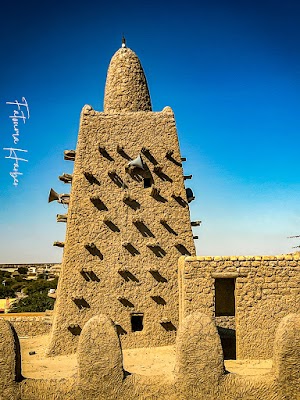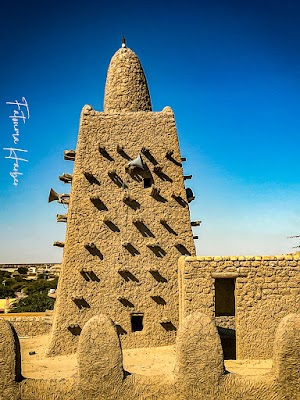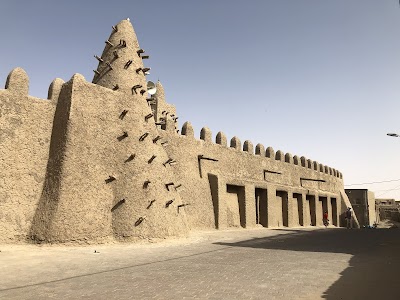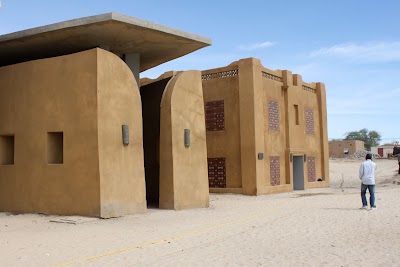Djinguereber Mosque (مسجد جنقريبر)
Overview
Welcome to the Djinguereber Mosque, one of the most iconic and historic landmarks in the Taoudénit Region of Mali. Nestled in the enchanting city of Timbuktu, this remarkable mosque is not just an architectural wonder; it stands as a vibrant testament to the rich cultural and religious heritage of West Africa.
The mosque was commissioned by the illustrious Mandinka emperor Mansa Musa after his famous pilgrimage to Mecca in 1324. Inspired by the grand Islamic architecture he encountered during his journey, Mansa Musa sought to bring that magnificence back to Mali. Constructed in 1327 by the skilled Andalusian architect Abu Ishaq Es-saheli, Djinguereber Mosque symbolizes the wealth, piety, and sophisticated artistry that defined the Mali Empire at its peak.
One of the mosque's most striking features is its unique Sudano-Sahelian architectural style. Built predominantly from organic materials such as mudbrick, straw, and wood, the mosque exudes a natural charm that harmonizes with its desert surroundings. The blend of simple, sturdy materials with intricate designs and soaring minarets creates a fascinating contrast. The earthy tones and sculpted forms capture the essence of the Sahel’s aesthetic beauty, making it a subject of intrigue for architects and historians alike.
At the core of its cultural significance, Djinguereber Mosque has served as an active center of worship and learning for centuries. Alongside the Sankore and Sidi Yahya mosques, it forms part of the prestigious University of Timbuktu. In its golden age, this university was one of the world's great intellectual hubs, attracting scholars from across the Islamic world who came to study a diverse range of subjects, including astronomy, mathematics, theology, and law.
While Djinguereber Mosque is a repository of historical significance, it also functions as a vibrant spiritual center. The mosque accommodates up to 2,000 worshippers during Friday prayers and other religious gatherings, fostering a profound sense of community and spiritual devotion among Timbuktu’s Muslim population. The well-preserved manuscripts housed within its walls offer a glimpse into the rich religious and academic life that has flourished here for centuries.
Interestingly, the mosque's maintenance is a community effort passed down through generations. Its mudbrick construction requires annual re-plastering with a mixture of mud and organic materials to protect it from the harsh desert climate. This yearly ceremony, known as 'Crepissage', is a communal event where local residents unite to renew and preserve their cherished monument. Observing or participating in this tradition provides invaluable insight into the communal spirit and cultural practices that sustain Djinguereber Mosque.
Modern visitors will discover the mosque as a beacon of historical and cultural significance that has endured through the ages. Recognized by UNESCO as a World Heritage Site in 1988, Djinguereber Mosque, along with Timbuktu’s other ancient mosques, underscores the global recognition of its outstanding value as a cultural and historical monument.
Despite facing political and environmental challenges, ongoing restoration efforts supported by international organizations and the Malian government continue to ensure that this precious heritage site thrives. Preserving the mosque is crucial not only for Mali but for humanity as a whole, as it safeguards a vital link to an era that has profoundly influenced the history of Africa and the wider Islamic world.
In conclusion, a visit to Djinguereber Mosque offers more than just a travel experience; it provides an immersive journey into the past, revealing the architectural ingenuity, cultural richness, and scholarly legacy of one of history’s most remarkable empires. Whether you're an architecture enthusiast, a history buff, or simply a curious traveler, Djinguereber Mosque promises a soulful and enlightening adventure that will deepen your appreciation for the rich tapestry of human civilization. Come and immerse yourself in the serenity and grandeur of this timeless masterpiece, and leave with memories that resonate with the echoes of centuries gone by.








